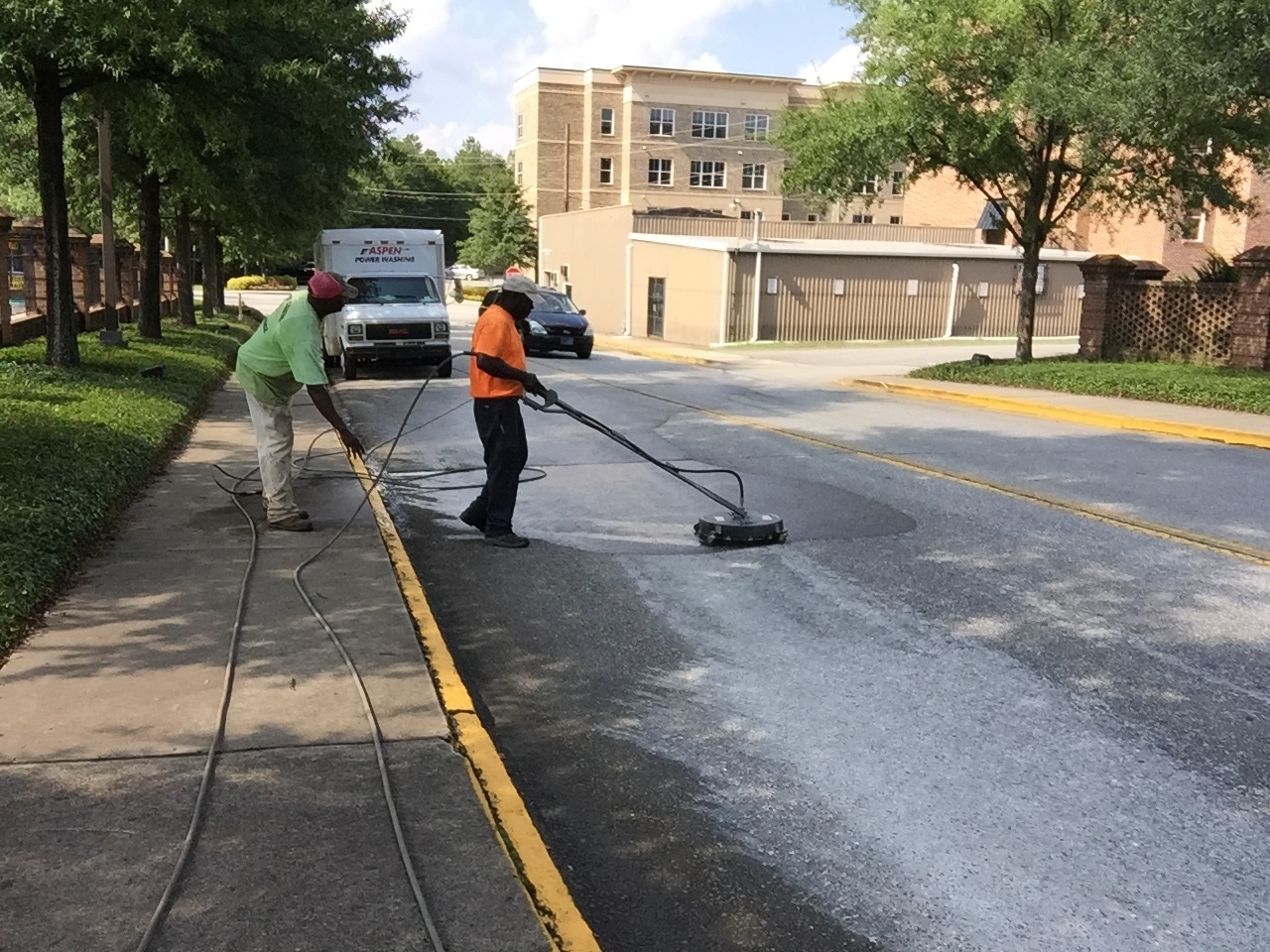
Power washing is a go-to method for removing dirt, stains, and debris from outdoor surfaces — but when it comes to asphalt driveways, many homeowners hesitate. You might be wondering: Is power washing bad for asphalt driveways? Or is it actually the best way to clean them?
The truth is, power washing is safe for asphalt — when done properly. Done carelessly, though, it can cause damage that leads to cracking, erosion, or costly repairs. Let’s walk through the dos, don’ts, and everything in between so you can clean your asphalt driveway without harming it. 🧼🛠️
🛣️ Understanding Asphalt: What Makes It Different?
Asphalt isn’t like concrete. It’s made from bitumen (a sticky, black petroleum-based material) mixed with aggregates like gravel and sand. That gives it its flexibility and dark color — but also makes it more vulnerable to high pressure and heat.
Unlike concrete, which is extremely hard and dense, asphalt is:
- 🧱 Softer and more porous
- 🪨 Prone to cracking or crumbling under intense force
- 🔥 Sensitive to high temperatures and chemicals
That’s why high-pressure power washing can be risky on asphalt — especially if you’re using commercial-grade equipment or the wrong nozzle.
✅ Is Power Washing Safe for Asphalt?
Yes — if you follow safe pressure levels, proper technique, and use the right tools. In fact, power washing is one of the most effective ways to:
- Remove oil and grease stains 🛢️
- Eliminate mold and algae growth 🌿
- Clear away dirt, sand, and debris 🌬️
- Improve the appearance of the driveway 🌟
But aggressive cleaning methods — or simply not knowing what you’re doing — can break apart the top layer of asphalt, loosen aggregate, or cause divots. 😬
Browse Amazon Here For Top Rated Power Washers And Accessories
🔧 Recommended PSI for Asphalt Driveways
To clean your asphalt driveway safely, use a pressure range of 1,200 to 2,000 PSI.
Here’s why that range works:
- Under 1,200 PSI may not be strong enough for deep stains
- Over 2,000 PSI can erode the surface, especially if the asphalt is older or cracked
⚠️ Never use a zero-degree nozzle (the red one). It delivers a pinpoint blast of water that can literally drill holes into your asphalt surface. Stick with:
- 25-degree tip (green) – general cleaning
- 40-degree tip (white) – gentle rinsing and delicate surfaces
🧼 How to Power Wash an Asphalt Driveway Safely
1. Inspect the Surface First
- Look for cracks, potholes, or loose areas
- Seal or patch damaged spots before cleaning
2. Clear the Area
- Remove vehicles, debris, toys, and any obstacles
- Sweep loose dirt and leaves before starting
3. Apply Detergent or Degreaser
- Use an asphalt-safe cleaner
- Let it sit for 10–15 minutes (but don’t let it dry)
4. Use Medium Pressure and a Wide Nozzle
- Start on low pressure and gradually increase
- Hold the wand about 12–18 inches from the surface
- Use sweeping motions — never concentrate water in one spot
5. Rinse Thoroughly
- Make sure all detergent and residue are gone
- Rinse from high to low elevation for best drainage
💡 What About Oil Stains?
Asphalt is oil-based, so oil stains are more than cosmetic — they can actually soften the surface and lead to erosion.
To treat oil stains:
- Use a biodegradable degreaser or citrus-based cleaner
- Scrub with a stiff-bristle brush
- Power wash on medium pressure
- Rinse thoroughly and repeat if needed
Avoid using harsh chemicals like bleach or undiluted degreasers that can damage the asphalt binder.
🧰 Maintenance Tips After Power Washing
Power washing is a great first step — but to protect your asphalt, you’ll want to follow up with maintenance:
- 🧱 Seal your driveway every 2–3 years
- 🛠️ Patch any cracks with asphalt repair filler
- 🧹 Sweep regularly to prevent buildup of debris
- 🌧️ Keep drainage clear to avoid water pooling and weakening the surface
A clean surface is easier to maintain — and regular care extends the life of your driveway by years. 🕰️✅
🛑 Common Mistakes to Avoid
- ❌ Using high pressure above 2,500 PSI
- ❌ Holding the nozzle too close to the surface
- ❌ Power washing over fresh sealcoating or new asphalt (wait at least 6 months)
- ❌ Using abrasive chemicals that break down the asphalt binder
- ❌ Cleaning in cold temperatures where water may freeze in cracks
🧠 When Should You Avoid Power Washing Asphalt?
There are a few cases where power washing isn’t ideal:
- Brand new driveways (less than 6 months old)
- Heavily cracked or crumbling asphalt
- During freezing temperatures
- When sealcoating is scheduled within 24–48 hours
If your driveway is in poor condition, consider light sweeping or soft washing until it’s repaired.
🏁 Final Verdict
Power washing is not bad for asphalt driveways — when done right. In fact, it’s one of the best ways to restore curb appeal and keep your driveway in good shape. Just remember:
- Stick to 1,200–2,000 PSI
- Use a wide-angle nozzle
- Avoid aggressive techniques
- Follow up with routine maintenance and sealing
With the right tools and a little know-how, you can safely wash your asphalt driveway without a hitch. Clean, sharp, and damage-free — just the way you want it. ✨🛣️💧
Browse Amazon Here For Top Rated Power Washers And Accessories






